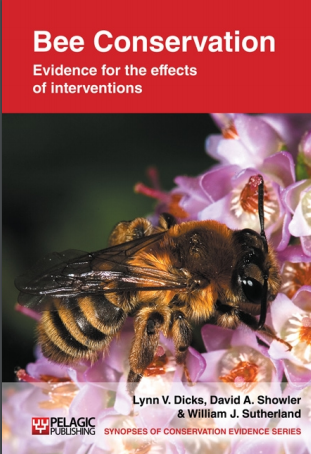Translocate bumblebee colonies in nest boxes
-
Overall effectiveness category Awaiting assessment
-
Number of studies: 3
View assessment score
Hide assessment score
How is the evidence assessed?
-
Effectiveness
not assessed -
Certainty
not assessed -
Harms
not assessed
Study locations
Supporting evidence from individual studies
An unspecified number of red-belted bumblebee Bombus rufocinctus colonies in wooden nest boxes were translocated an unspecified distance from their original site to a crop field, in southern Alberta, Canada, once the first brood of workers had begun foraging (Hobbs et al. 1960). Some workers were lost and queens began foraging for nectar. Two queens were killed as a result of returning to the wrong nest. Colonies that were moved raised an average of four new queen cocoons (range 4-9), while colonies that were not moved raised on average 22 new queen cocoons (range 17-27).
Study and other actions testedFive colonies of the early bumblebee B. pratorum housed in wooden boxes were experimentally translocated in Hertfordshire, southern England (Free 1955). Colonies were moved six miles (9.7 km), 80 yards (73 m), seven yards (6.4 m) or three inches (7.6 cm) from the original site. Apart from the smallest translocation distance, some foraging workers were lost due to each translocation. Between 71% and 92% of foraging workers returned to the nest at the new site eventually.
Study and other actions testedOn seven occasions in spring 1960 and 1961, an unspecified number of colonies of long-tongued bumblebee species B. appositus, B. californicus and B. nevadensis were moved, overnight, up to six miles away just after the first brood of workers had emerged, in southern Alberta, Canada (Hobbs et al. 1962). An empty box with a one-way door was placed on the old site for two hours the following morning. On one occasion, half the workers from a colony of B. californicus were out when the colony was moved and captured in the trap. On the other six occasions, few workers were left behind. Several queens (at least eight) were killed after translocation by re-entering the wrong nest box. The authors recommend delaying translocation until the second brood has emerged and the queen no longer forages.
Study and other actions tested
Where has this evidence come from?
List of journals searched by synopsis
All the journals searched for all synopses
This Action forms part of the Action Synopsis:
Bee Conservation
Bee Conservation - Published 2010
Bee Synopsis





)_2023.JPG)














